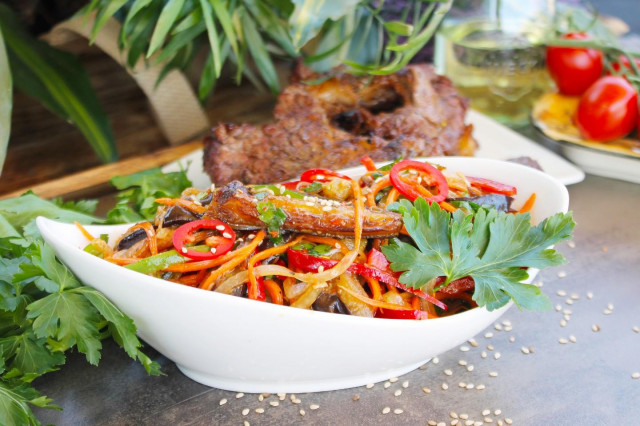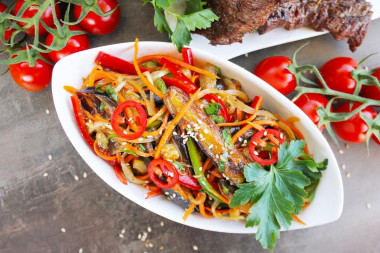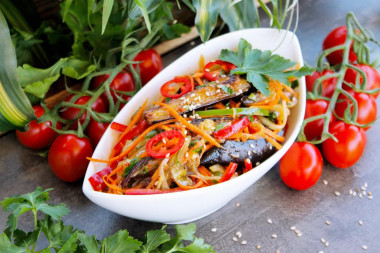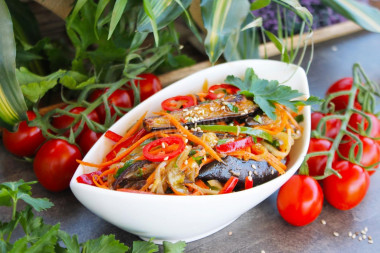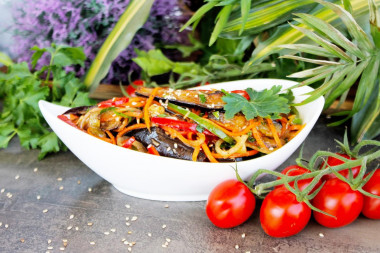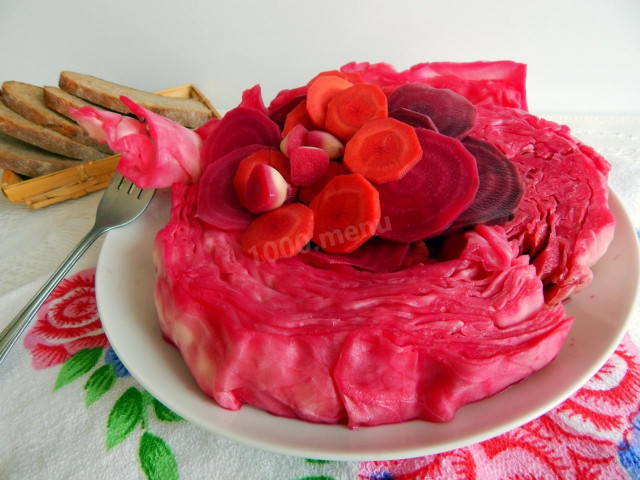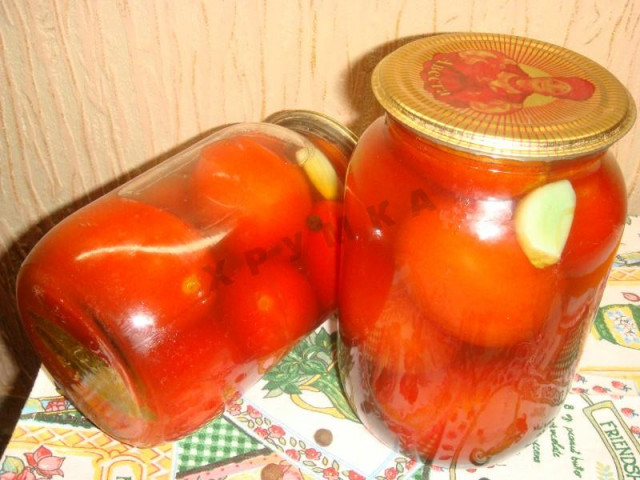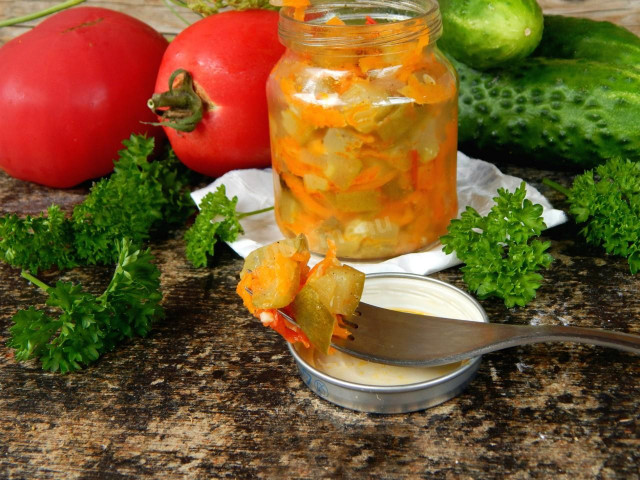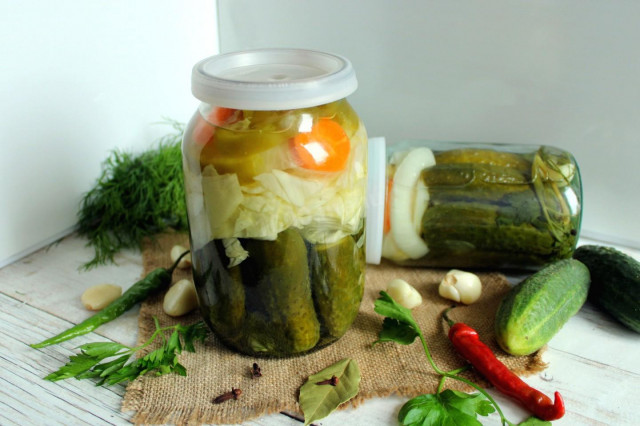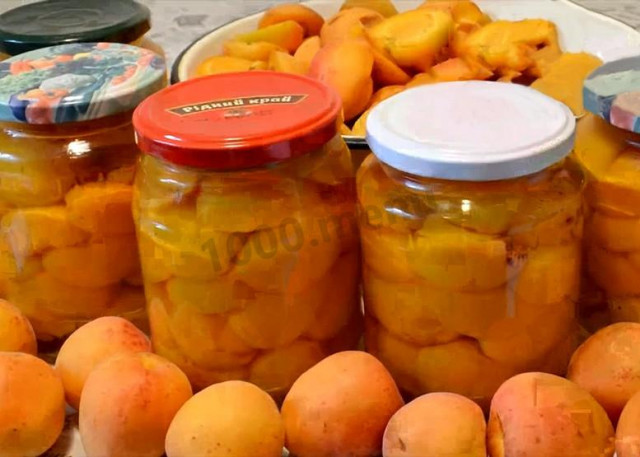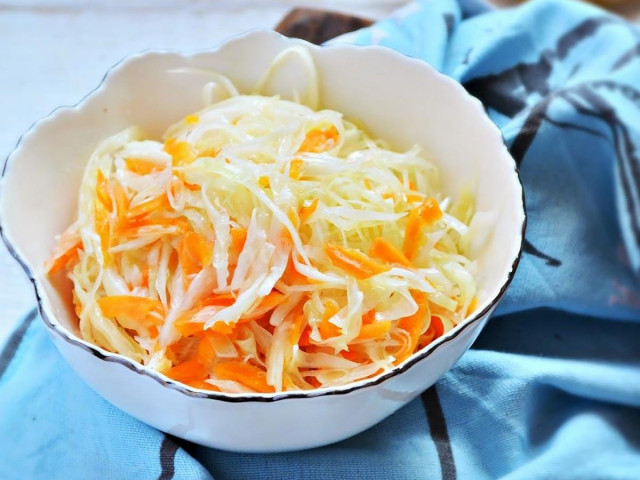Composition / ingredients
Step-by-step cooking
Step 1:
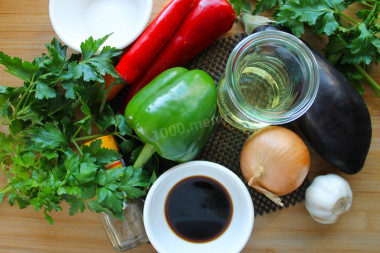
How to make eggplant hye in Korean? Prepare everything you need for cooking.
Step 2:
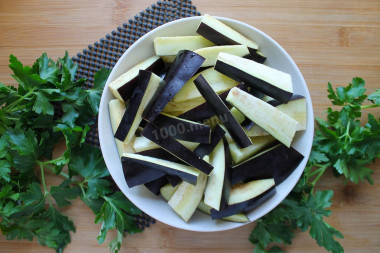
Let's do the eggplant first. Cut them into small cubes about one centimeter wide, and you can make any length at will.
Step 3:

Pour one tablespoon of salt into a cup with eggplants, pour cold water so that it completely covers the blue ones and leave them for twenty minutes. This is necessary first of all so that during further frying, eggplants absorb less oil, plus salt water will pull out all the bitterness from the fruit.
Step 4:
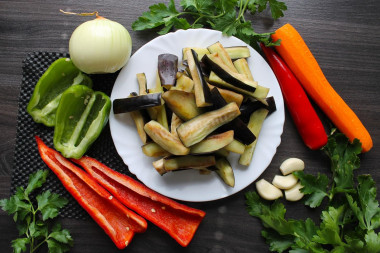
After soaking, drain the water, and lightly squeeze the eggplants with your hands. Peel the carrots, onions and garlic. Cut off the stalk from the peppers, and then remove the seeds. Rinse all vegetables under running water.
Step 5:
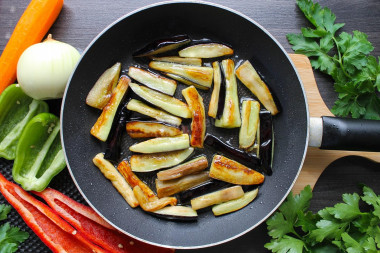
Heat vegetable oil in a frying pan. Fry the cubes in it. Do not forget to stir continuously so that the eggplants are fried evenly. You should cook until the moment when rosy, appetizing sides appear on the blue ones. It took me about five minutes. Be careful, there may be strong splashes of hot oil at the time of frying, so I would recommend using a frying pan with high edges.
Step 6:
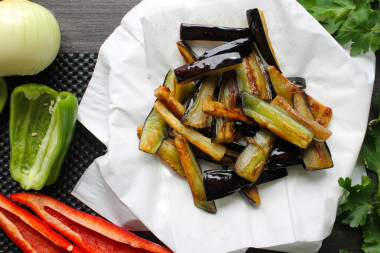
If you don't have a large frying pan, then fry the blue portions for convenience. Put the eggplants on dry napkins to get rid of excess fat. At this time, prepare the remaining components.
Step 7:
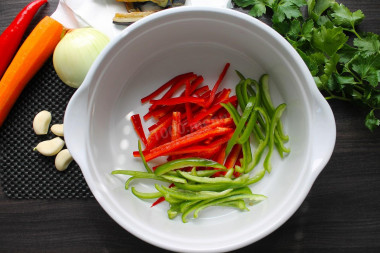
Cut the bell pepper into thin strips. For the brightness and beauty of the finished He, if possible, use fruits of different colors.
Step 8:
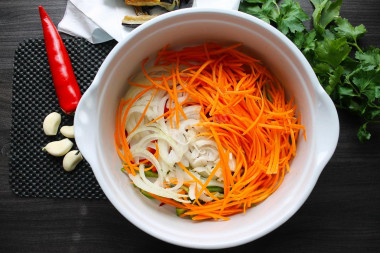
Chop the carrot on a grater for Korean carrots, and make the onion as thin as possible in half rings. Put the carrots and onions in a salad bowl with bell pepper.
Step 9:
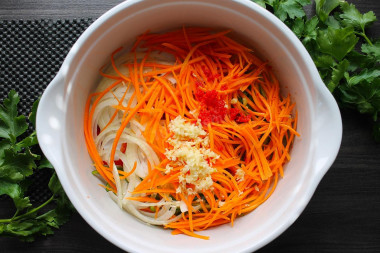
Next comes the turn of garlic and chili pepper. It is best to grate them on a fine grater, but if desired, you can cut them by hand finely.
Step 10:
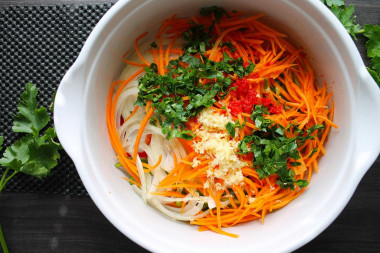
Add finely chopped greens to all the ingredients. Parsley or cilantro are perfect for a salad. I added parsley, as not everyone in the family recognizes cilantro.
Step 11:
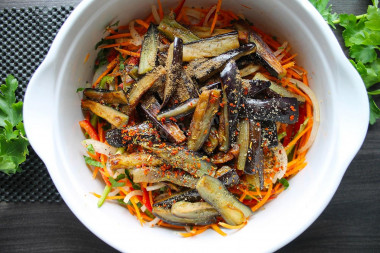
The finishing touches, eggplant and spices are left. Send the blue ones to the salad bowl, then add sugar, soy sauce and vinegar. If you have ground coriander at hand, then use it for salad too, it gives a special taste and zest to the finished He. I added a little more coarse chili pepper and a pinch of allspice.
Step 12:
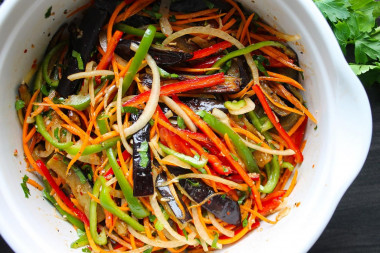
Mix the salad thoroughly, taste it. If you do not have enough salt, sugar or vinegar, then add a little missing component, constantly trying Heh, until you get the perfect combination. Put the finished salad in the refrigerator for at least an hour so that it is infused. The longer the salad stands, the tastier and brighter it will become.
Step 13:
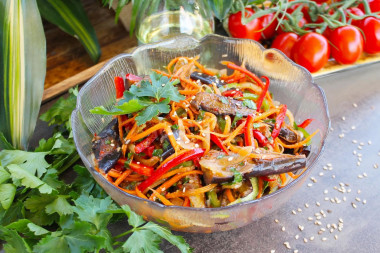
Sprinkle the finished eggplant dish with sesame seeds if desired. You can serve it to the table!
The sharpness of the salad, of course, can and should be adjusted to your own taste, someone likes it sharper, then, accordingly, the amount of hot pepper should be increased and vice versa, if you like not very spicy dishes, then reduce the amount of chili a little.
Rich sweet and sour flavors are inherent in Korean salads, but the amount of sugar, salt and vinegar should also be selected according to your own taste sensations. Soy sauce itself has a salty taste, maybe it's enough for you and you won't add salt at all. In the recipe, I added half a teaspoon of fine salt, it was just right for our taste!
The longer the salad stays in the refrigerator, the tastier it will become!
Bon appetit!
Please note that in some cases there is no need to remove the bitterness from eggplants - usually young vegetables are not bitter, as well as some special varieties of them.
When adding soy sauce to a dish, it is worth considering that it has a rather salty taste. Reduce the total amount of salt, otherwise you risk over-salting.
Any oils are useful only until a certain temperature is reached - the point of smoking, at which the oil begins to burn and toxic substances, including carcinogens, are formed in it. How to determine the roasting temperature and choose the best oil for frying, and which is better not to use at all, read here .
Caloric content of the products possible in the composition of the dish
- Onion - 41 kcal/100g
- Sweet pepper - 27 kcal/100g
- Carrots - 33 kcal/100g
- Dried carrots - 275 kcal/100g
- Boiled carrots - 25 kcal/100g
- Eggplant - 24 kcal/100g
- Garlic - 143 kcal/100g
- Parsley greens - 45 kcal/100g
- Soy sauce - 51 kcal/100g
- Granulated sugar - 398 kcal/100g
- Sugar - 398 kcal/100g
- Wine vinegar (3%) - 9 kcal/100g
- Vinegar 9% - 11 kcal/100g
- Balsamic vinegar - 88 kcal/100g
- Apple vinegar - 14 kcal/100g
- Vinegar - 11 kcal/100g
- Vegetable oil - 873 kcal/100g
- Salt - 0 kcal/100g
- Chili pepper - 40 kcal/100g
- Ground coriander - 25 kcal/100g

